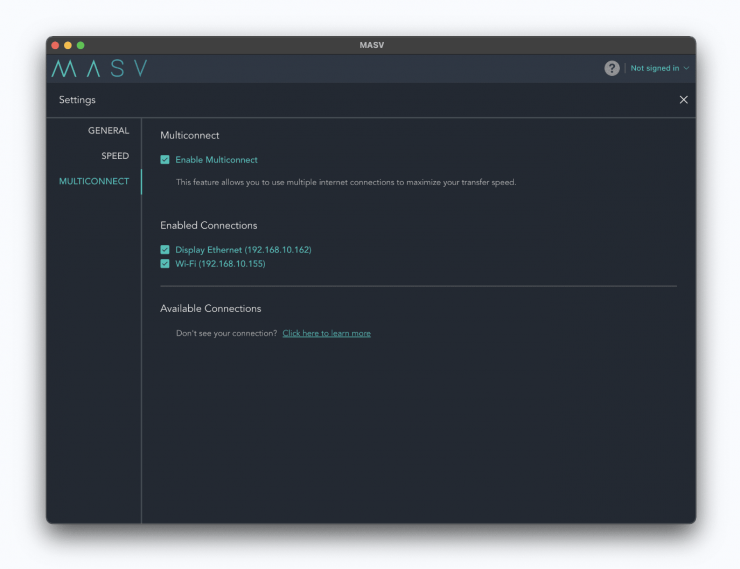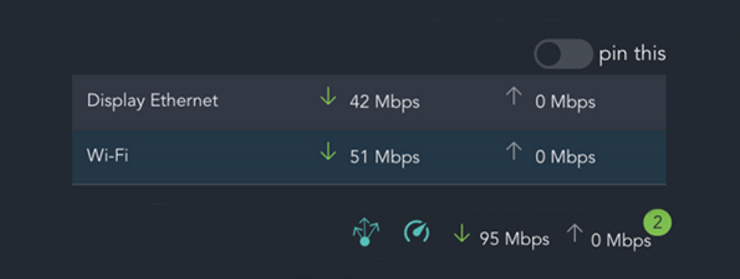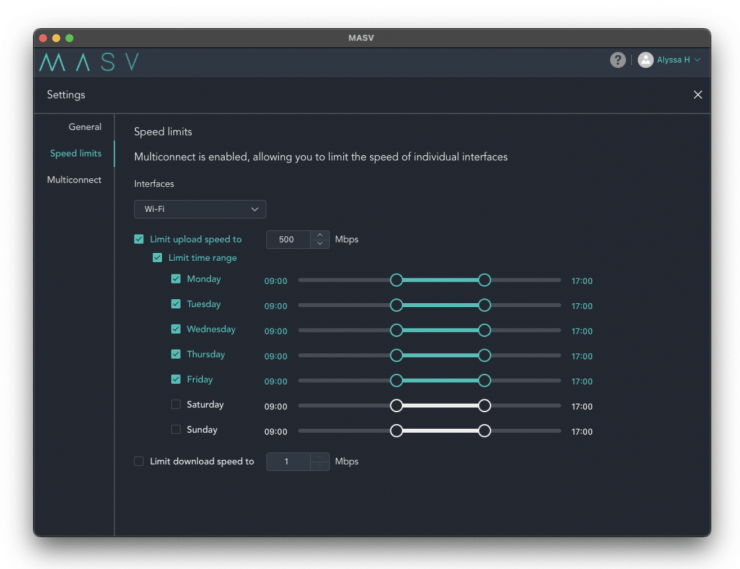MASV Multiconnect is a MASV Desktop feature that lets you bond two or more sources of internet together. For example, your home internet with your phone’s 5G network or a satellite connection (e.g. Starlink).
By combining different networks, your transfers gain more bandwidth that allows you to send files even faster, which in turn, reduces your overall transfer time.
If you aren’t familiar with MASV it is a fantastic service that allows you to send very large files very quickly. I have personally been using it for years and it is how I send files to clients. It is much quicker and cheaper than buying a hard drive and then shipping it, especially if the client is overseas.
If you already have a fast internet connection you probably won’t need to use this feature, however, if you need to send large files very quickly if you are up against a tight deadline or you don’t have a very fast home internet connection then this is a good solution.

How much time you will save depends on the speed of your respective connections. For example, if you have access to a 5Gbps or 10Gbps connection, your transfer speeds using Multiconnect will be significantly faster. To calculate your estimated transfer time, use the following equation:
File size in GBs x 1024 x 8 / mbps / = X/3600
So how does it work?
You need to download the MASV Desktop app if you don’t already have it. Yoy then go to:
Settings > Multiconnect > Enable Multiconnect > Select networks from available list

The additional bandwidth will kick-in automatically after a few seconds and you will be able to can see how well each network is performing from the main app dashboard.
Now, in order for Multiconnect to work properly, your connections cannot share the same router/modem. All connections must be from a different network entirely. Your computer also needs an extra receiver because most computers only have a single card/port to receive one network at a time. With Multiconnect, you can easily access an additional network via USB tether or a Wi-Fi dongle.
What you really need to be aware of so you don’t get a nasty phone bill is that if you use a mobile or satellite device, data rates will apply. These fees are separate from MASV and dependent on your provider.

During busy studio hours, you may prefer to limit the speed of a particular connection. Using the “Speed Limits” feature, you can choose the upload and download speed for each connection and for each day of the week.
A Step-by-Step Guide to Setting up Multiconnect
iPhone
When you use an iPhone there are two ways to use Multiconnect;
1 Mobile Hotspot via Wifi + Ethernet:
Connect an ethernet cable to your computer. You can use a direct ethernet port or a USB adapter Connect to the iPhone’s hotspot (often called “Personal Hotspot”) from your computer’s wifi settings
2 Mobile Tethering via USB + Wifi:
Connect your computer to your wifi as normal Next, plug your iPhone into your computer via a USB cable. Note: If you’re using Mac: once the iPhone is plugged in you will need to go to your Mac’s network setting and select iPhone USB. From there, deselect the option “Disable unless needed”. Once the setting is off you will be able to see both options when you are in the Multiconnect settings in the MASV desktop app.
Android Phone
With the Android there are two ways to use Multiconnect;
1 Mobile Hotspot via Wifi + Ethernet:
Connect an ethernet cable to your computer. You can use a direct ethernet port or a USB adapter. Connect to your phone’s hotspot from your computer’s wifi settings
2 Mobile Hotspot via USB + Wifi:
Note: if you’re using a Mac, then this might not work. Depending on which Mac device and macOS version, you could try installing HoRNDIS driver.
Connect your computer to your wifi as normal. Turn on USB tethering on your phone by going to Settings> Tethering & Mobile Hotspot. Toggle the “USB tethering” switch on. Next plug your phone into your computer via a USB cable





